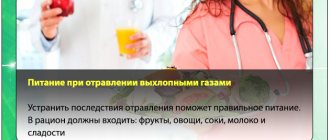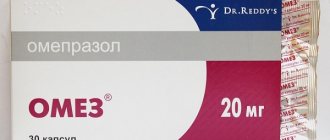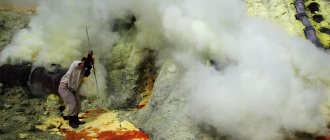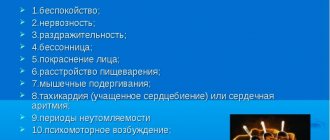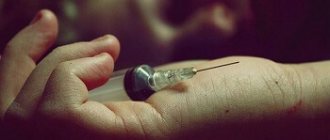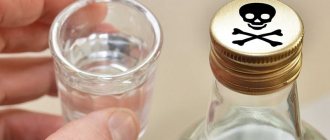Since the dawn of mankind, poisons have played a significant role in our lives. They lubricated arrows when going hunting, they silently and without any problems eliminated unwanted husbands or political rivals, they used them to execute criminals. Poisons have penetrated so much into all spheres of human life that people wanted to have reliable protection against this formidable weapon.
Alexey Vodovozov
27 September 2020 14:00
In medical literature, an antidote is called an "antidote" (from the Greek "given against"). Moreover, in the same literature there is no unambiguous definition of what an antidote is. In theory, an antidote must have at least one of two properties: first, it must neutralize the poison in the body by interacting with it at a chemical or physical level; the second is to eliminate the effects of the poison on cells, tissues, organs and systems.
The ideal antidote combines both of these properties, but, like the ideal husband, does not exist in nature. Therefore, even in modern conditions, not every poison can be resisted by acting on its essence. Often you have to “beat the tails”, simply trying to maintain the vital functions of the body and eliminate certain emerging symptoms. Such therapy, in contrast to antidote, is called symptomatic.
However, antidotes also have weaknesses. Firstly, the antidote must be introduced into the body as early as possible. The more time has passed since the poisoning, the less effective the antidote will be. Secondly, antidotes are highly specific, that is, they will only work against certain chemical compounds. And in other cases they will be useless at best. At worst, you can get poisoned by the antidote, because they are often administered in very high doses. Therefore, it is extremely important to correctly diagnose and identify the toxin. Thirdly, the antidote prevents the development of complications, sometimes deadly. But it is completely useless if complications have already developed. Unfortunately, medicine, by historical standards, came up with all this just yesterday. Before that, knowledge about poisons and antidotes was bizarre and contradictory.
SH groups, highlighted in red, are called sulfhydryl, or thiol, and play an extremely important role in the biochemistry of the body. More than 100 enzymes are known whose activity can be inhibited when thiol groups in them are blocked. Substances containing SH groups are associated with the conduction of nerve impulses, tissue respiration, muscle contraction, permeability of cell membranes, etc. Therefore, poisons that act on sulfhydryl groups will affect the body at many levels simultaneously. And that’s why protection from them is so important.
What is a blister agent?
Blistering toxic substances are toxins, the effect of which on the human body causes acute inflammatory-necrotic transformations of the mucous membranes and dermatological integuments. These are sulfur and nitrogen mustards, as well as lewisite .
These substances have an oily consistency, are characterized by a high boiling point, low water solubility and a high level of miscibility with solvents of organic origin. This indicates the ability of toxic substances to quickly penetrate shoes and clothing and be absorbed into the skin.
Middle Ages and Renaissance
In Europe, until the Renaissance, doctors were mainly engaged in promoting the views of ancient authors, not daring to contradict them or challenge what they wrote. Medicine, like many other sciences, was marking time. The belief in a single mechanism of action of all poisons and in a universal antidote “for everything” was persistently maintained. For a long time, a bezoar, a stone from the gastrointestinal tract of ruminants, was considered such an antidote. It was used both internally and externally.
But in the East at that time the star of Abu Ali Hussein ibn Abdallah ibn Sina, better known as Avicenna (980−1037), was shining. His Canon of Medicine described more than 800 different medicines. Including those used for poisoning, fortunately in the East this method of settling scores was very common. The Canon contains many recommendations for the treatment of specific poisonings. Thus, from a toxicological point of view, the advice to use milk and butter for salt poisoning is very reasonable. However, Avicenna also described the use of mithridatism, when concubines were given aconite juice (containing the deadly alkaloid aconitine) for a long time and regularly, starting with meager doses and ending with lethal ones. Subsequently, these “killers” were used to eliminate unwanted people - such a concubine could easily share a glass of wine with an unsuspecting victim. The dose of poison contained in the glass was insignificant for the concubine, but destructive for any other person. There were also stories of women who could kill a man with one kiss.
During these eras, another important point of view was finally formed: poison must be removed from the body as quickly as possible. Emetics, diuretics, laxatives, diaphoretic and salivary medications became highly valued. Modern toxicology also adheres to this point of view and these methods of detoxification.
Distinctive features of mustard gas damage
Mustard gas looks like a colorless or brick-brown liquid with a garlic or mustard odor. The substance slowly evaporates into the air. It is used in two combat states: aerosol and droplet-liquid. The distribution range of its vapor reaches 20 km in open areas.
The effects of mustard gas can be distinguished from intoxication with other toxic substances by the following characteristics:
- No pain or discomfort during contact. The poison has an analgesic effect on the nerve endings, so a person does not feel contact with it and cannot take protective measures in a timely manner. Due to the lack of irritant effects, mustard poisoning is quite difficult to diagnose.
- The presence of a period of latent progression of the lesion. The duration of absence of specific symptoms may vary in different situations and depend on the volume of the poison exposed, its condition, the mode of penetration into the body and individual susceptibility. The greater the dose of mustard gas exposed to a person, the faster the first symptoms of damage will appear. The eyes are most sensitive to the toxic substance, the skin is the least sensitive. The rate of manifestation of the reaction also depends on the state of aggregation of the poison: droplet-liquid and fog-like mustard gas are characterized by a short latent period, while vapor mustard has a longer latent period. The maximum duration of absence of signs of damage reaches 24 hours.
- Reduced immunobiological resistance. When the body is affected by mustard gas, it becomes infected, caused by a sharp decrease in resistance to the effects of pathogenic factors. A decrease in immune defense contributes to a longer treatment period and a more complex course of the disease. This phenomenon is especially dangerous if the organs of vision and breathing are damaged. To improve the condition in a hospital setting, prophylactic antibiotic therapy is used.
- Slow recovery process. Neurotrophic disorders caused by exposure to a toxic substance lead to a slowdown in the healing process of damaged tissues and restoration of impaired functions.
- Increasing the body's sensitivity to irritants. If a person is repeatedly exposed to mustard gas, even small doses of the substance can cause serious damage.
The mechanism of influence of nitrogen and sulfur mustard is quite similar. The key difference is that nitrogen mustard causes a greater irritant effect on the respiratory and visual organs . In this case, the disease is characterized by a milder course of the disease and accelerated recovery.
Antiquity
It cannot be said that before the ancient Greeks, humanity knew nothing about poisons. But the first systematization of toxicological knowledge began in the time of Hippocrates. It was in the “Hippocratic Collection” (300 BC) that the conviction was expressed that for any poison there should be an antidote and be used. However, the opinion of the “father of medicine” was quickly forgotten. And doctors spent many centuries in pursuit of a universal antidote “for everything.”
The story of the antidote to the Pontic king Mithridates VI Eupator (134−63 BC) is interesting. He was terrified of being poisoned. Therefore, the court physician was given the task: to develop an effective means of protection against all poisons known at that time. The king personally participated in experiments on people sentenced to death; they were subjected to poisonous snake bites, given various infusions, and then various treatment methods were tested. As a result of many years of work, an antidote appeared, which included 54 different components: opium, various plants and the bodies of snakes ground into powder. A “printed work” also appeared, the treatise “Secret Memoirs,” which was protected on a par with the royal treasury.
It is known that Mithridates took his antidote daily, hoping that in this way the body would develop resistance to poisoning. Tradition says that the antidote worked. When his son rebelled against the king and seized the throne, Mithridates tried in vain to poison himself. I had to throw myself on the sword. And the “Secret Memoirs” were captured in 66 BC. the outstanding Roman commander Gnaeus Pompey the Great (106-48 BC). By his order, the work was translated into Latin, and Mithridates’ antidote was remembered even in the Middle Ages.
Course of intoxication with vapor mustard gas
Mustard fumes affect humans in many ways: they can damage the eyes, respiratory system and skin . The severity of the process depends on the saturation of the toxic substance and the time of its effect on the body.
There are three degrees of damage to the body as a result of exposure to vapor mustard gas:
- Mild degree. The first symptoms occur 2-6 hours after contact with the toxin. The eyes begin to hurt, react sharply to light, and their redness is noticeable. After 8-12 hours, there is a feeling of dry mouth, sore throat, runny nose, dry cough, loss of voice. Signs of nasopharyngolaryngitis become more and more noticeable over time. After 15-17 hours, erythema forms on the skin - redness of certain areas of the skin. They affect such areas as the inner thighs, armpits and elbows, and the genital area. Possible redness of the face and neck. When heated, the itching intensifies in the area of erythema. Along with local symptoms of intoxication, general ones appear - nausea, vomiting, headache, fever.
- Average degree. The latent period of intoxication ranges from 4 to 6 hours. Against the background of pronounced conjunctivitis, signs of damage to the organs of the respiratory system appear. The person has a severe cough, profuse mucopurulent nasal discharge, and difficulty breathing. When swallowing and talking, a sore throat occurs, the cough intensifies as night falls and when the ambient temperature changes, it becomes wet. Signs of acute tracheobronchitis increase, necrosis of the mucous membrane of the bronchi and trachea occurs, leading to various complications. Body temperature rises to 38 degrees. The duration of moderate mustard gas poisoning is 1-2 months.
- Severe degree. The described signs of damage include blueness of the skin and mucous membranes, shortness of breath, and increased coughing. Mustard pneumonia develops, and in some cases pulmonary edema occurs. If heart failure occurs, death may occur . A favorable course of poisoning helps to improve the patient’s condition after 2-3 weeks. In this case, a person’s complete recovery is impossible.
► Poisoning with toxins of bacterial and animal origin
| Poisons and toxins | Antidotes and antidotes | Methods of application |
| Botulinum toxin | No antidote | |
| Snake bites | Antivenin or heparin | Antivenin is administered intravenously 20-150 ml. The exact amount of antivenom depends on the severity of the symptoms. Heparin is administered in a volume of 10,000 units. |
| Wasp and bee stings | Metasone, adrenaline or Prednisolone | Metazone is administered intravenously using a dropper in the form of a solution. Adrenaline is administered subcutaneously; it can be replaced with ephedrine. |
| Karakurt toxin | Antivenin, magnesium sulfate or calcium chloride | Antivenin is administered in an amount of 2.5 ml intramuscularly or intravenously. Magnesium sulfate is administered in the form of a 25% solution, and calcium chloride is 10%. |
Poisoning with liquid mustard gas
Under the influence of droplet-liquid mustard gas, damage to the skin, eyes and gastrointestinal tract occurs. The severity of the body's reaction depends on the amount of the substance exposed.
Damage to the organs of vision
Eye damage is most often severe and appears within 1-2 hours after contact with the toxin. The first signs of poisoning are a reaction of the cornea, manifested in photophobia, lacrimation, redness, swelling of the conjunctiva, a feeling of sand in the eyes and pain of varying intensity. On the second day, cloudiness and roughness of the cornea are observed, and ulcers begin to appear in the area of inflammation. There is a possibility of corneal rejection and vision loss.
Severe pain in the eye area is caused by a secondary infection, which is accompanied by the formation of pus in the anterior chamber of the eyeball and inflammation of the iris. The duration of inflammation of the organs of vision reaches 5-6 months.
Skin damage
Skin damage as a result of droplet-liquid exposure to mustard gas occurs in different ways. The process depends on the degree of damage:
- Mild damage is reflected in the appearance of erythematous areas of the skin. The first symptoms appear 12-14 hours after exposure to the poison . On days 4-5, erythema gives way to pronounced pigmentation and peeling of damaged skin. After a week, the symptoms of poisoning disappear, leaving only pigmentation.
- The average form of the lesion appears after 2-4 hours. The appearance of erythema is accompanied by the formation after 8-10 hours of vesicles, which turn into erosion upon opening. For some time, the blisters increase in size, after which they disappear, leaving pronounced erosive areas that are completely covered with epithelium within 2-3 weeks.
- Severe damage causes the development of erythematous-bullous dermatitis. Bubbles begin to form 3-5 hours after contact with the toxic substance. On the third day, they are damaged, resulting in the formation of an ulcerative surface. As a result of infection of the ulcers, necrotizing dermatitis may develop, which recedes after 3-4 months. At the site of the ulcers, white scars form, surrounded by pigmented skin.
Damage to different areas of the skin is characterized by different durations and characteristics of the process.:
- when facial skin is damaged, accelerated healing of ulcers is observed, without the formation of clearly defined scars;
- damage to the scrotum is accompanied by the formation of an extensive erosive surface and serious disruption of the urination process;
- When mustard gas comes into contact with the feet and legs, the formation of trophic ulcers is observed, which is characterized by a complex process of occurrence and recovery.
Damage to the digestive system
Ingestion of a toxic substance orally with contaminated water or food causes severe intoxication of the gastrointestinal tract. The first signs of damage appear a quarter of an hour after mustard gas enters the body .
A person experiences blood flow to the mucous membranes and gums, and loose, bloody stools occur. General signs of intoxication develop: weakness, slowness of reaction, convulsive phenomena. In some cases, necrotic changes occur in the stomach. From the nervous system, symptoms such as excitement, fear, and a state of passion followed by attacks of depression are observed. Developing acute heart failure can cause death within 1-2 days . Death is also common on days 7–10 as a result of acute wasting. With a more favorable course of the disease, a person experiences a general weakening of the body and anemia. Cancer is likely to develop in the future.
Poisons and antidotes
The classification of antidotes includes 3 groups: nonspecific, pharmacological, chemical. The first ones are always used, they include sorbents. The latter are competitors for receptors. The latter change the metabolism of the xenobiotic.
| I | Antidote or effective medicines | Scheme |
| Azides (sodium and potassium). Widely used in the chemical industry and metallurgy. Contained in airbags. | Nicotinamide, Riboflavin. | Inject 1 ml in 5% glucose solution |
| Antiseptics and disinfectants | Sodium chloride | In combination with other therapy. 0.9% 800 ml drip. |
| Ammonia, acrolein | Naphthyzin, adrenaline | According to indications. |
| Arsine. Used in metallurgy and electronics industry. | Unithiol | 0.5 mg per 1 kg of body weight. Dilute 400 ml in glucose solution. |
| Barium. Salts are used in the production of ceramics and textiles. Included in epilators. | Potassium chloride | Into a vein at the rate of 1015 µV/kg |
| Dichloroethane. It is a universal organic solvent. | Levomycetin hemisuccinate | 0.1 g intravenously diluted in 10 ml of 0.9% sodium chloride solution |
| Copper and its salts: oxide, acetate, carbonate, chloride, nitrate, sulfate, cyanide | Penicillamine Unithiol |
|
| Arsenic | Penicillamine Unithiol |
|
| Methyl alcohol. Widely used in the paint and varnish industry. | Ethanol Fomepizole Folinic acid. |
|
| Methemoglobin formers: nitro and amino compounds, cyanides | Methylene blue Ascorbic acid. |
|
| Nitrites, nitrates | Methylthioninium chloride Vitamin C |
|
| Carbon monoxide (CO, carbon monoxide) | Hyperbaric oxygenation Acizol Cytoflavin |
|
| Hydrocyanic acid | Sodium thiosulfate | 30 ml in 30% solution |
| Pentachlorophenol, dinitrophenol. Used as pesticides and defoliants. | Acetylcysteine | 20% 10 ml intravenously |
| Metallic mercury and its salts | Unithiol | 0.3 mg/kg infusion |
| Waist | Potassium Chloride Unithiol |
|
| Phosphorus white or yellow | Sodium thiosulfate Calcium gluconate Magnesium sulfate |
Administered intravenously under blood pressure control |
| FOS (organophosphorus insecticides) | Atropine. It is one of the main antidotes. Acts on cholinergic receptors. Cholinesterase reagents |
|
| Hydrofluoric acid | Calcium gluconate | 10% 20 ml intravenously slowly |
| Chlorine | Oxygenation Atropine |
|
| Ethyl alcohol or alcohol in large doses | Glucose Thioctic acid Vitamin B1, B6 |
|
| Ethylene glycol | Ethanol Calcium chloride | Through a probe of 30 ml. 10% intravenously, 10 ml. |
Lewisite poisoning
Lewisite appears as a thick, dark brown to black oily liquid that smells like geranium . It is highly soluble in fats and solvents, and easily combines with various toxic substances. Lewisite has a higher toxic effect compared to mustard gas.
Symptoms of lewisite poisoning depend on the method of its penetration into the body:
- When the respiratory system is affected, irritation of the mucous membrane is observed, expressed by sneezing, coughing, runny nose, and a sore throat. A mild form of poisoning is often cured within 6-7 days. In case of moderate poisoning, bronchitis develops, difficulty breathing, increased coughing with the removal of purulent sputum. Severe degree is characterized by the development of pulmonary edema . If the disease progresses positively, it is cured within 4-6 weeks.
- When the skin is affected by lewisite, a burning sensation and pain occurs at the moment of contact. Erythema develops and bubbles form. The process is accompanied by swelling and hemorrhages. Infection of the affected areas often does not occur.
- When lewisite gets into the eyes, it causes tearing and pain. Within an hour, clouding of the cornea, swelling of the eyelids, and hemorrhages appear. With a favorable prognosis, recovery occurs within 2-3 weeks.
Antidotes for mushroom poisoning
| I | Antidote/effective medicine | Usage diagram |
| Death cap | Silibinin | 20 mcg/kg intravenously |
| Morels | Pyridoxine | 100 or 300 mg IV |
| Stitches | Vitamin B 6 | Only intravenously. Calculation per 1 kg of body weight: 0.25 g. |
| Psilocybin | Diazepam | 2 tablets |
| Red and panther fly agaric | Atropine | 2 ml i.v. |
Treatment
The degree of poisoning of a person and the level of damage to his organs and systems depend on the timeliness of providing treatment measures.
First aid
To provide first aid to victims who have come into contact with toxic substances of blister action in the contaminated area, the following measures are taken:
- washing the eyes with clean water or 2% soda solution;
- use of a gas mask;
- cleansing uncovered areas of skin and tight clothing with the drug provided in the individual anti-chemical package (IPP);
- inhalation of a special anti-smoke composition with clearly defined damage to the mucous membranes of the respiratory organs.
Beyond the border of infection, secondary rinsing of the eyes, mouth and nasopharynx is necessary as first aid. When toxic substances enter the digestive system, you need to lavage the stomach, inducing vomiting.
Health care
Emergency procedures for providing medical care cover the following activities:
- fragmented sanitation;
- the use of special ointments for eye treatment;
- cleansing the stomach using a probe;
- taking adsorbent drugs;
- the purpose of unithiol - an antidote for lewisite intoxication;
- anti-burn measures.
Further steps to provide medical care include symptomatic therapy:
- The affected areas of the skin are treated with antipruritic and painkillers. If necessary, existing chemical burns are treated.
- Treatment of the affected organs of vision is carried out using conservative methods using antibiotics, anesthetics, and antihistamines.
- Poisoning through the digestive organs involves the prescription of antispasmodic and ganglion-blocking agents, anti-shock therapy.
The patient is prescribed medications to prevent the development of secondary infections and inflammatory processes .
With the help of antihistamines, multivitamin complexes and biostimulating agents, the body's protective function, damaged as a result of exposure to poison, is enhanced.
Antidotes for plant toxins and alkaloids
The table lists the main types of toxins that are commonly ingested orally. Antidotes must be used immediately after symptoms of intoxication appear.
| Toxin | Antidote/effective medicine | Application diagram |
| Peppermint oil, camphor oil, eucalyptus oil, lavender oil | Acetylcysteine | Orally 150 mg/kg, which is equal to 10% |
| Steroid glycosides | Digoxin immune | 0.4 mg per 1 kg |
| Saponins | No | Rinse the stomach with warm water. Further symptomatic therapy |
| Anthraquinones | Glucose | 5% solution 20 ml intravenously. Then treatment according to indications |
| Ephedra | Aminazine | 2.5% in 5% glucose solution 40 ml |
Medicines
Drug poisoning is also not uncommon. There are certain means that are used to neutralize poisons. They can be seen in the table below.
| Medicine | antidote | How to use |
| Anestezin | Methylene blue | A one percent solution along with glucose is injected into the victim’s vein |
| Atropine | Pilocarpine | 1 ml of the drug under the skin of the victim |
| Barbiturates | bemegrid | Use up to 10 ml of medication by injection into the veins. |
| heparin | Protamine sulfate | Injecting approximately five ml of medication into a vein |
| diazepam | Flumazenil, anexat | Injection into a vein up to five cubic cm |
| insulin | Hormones released during stressful situations, adrenaline, glucose | 1 cubic cm of the drug in a comatose state at a concentration of 0.1% |
| Caffeine | There is no antidote | |
| Pilocarpine | Atropine | Injection under the skin or into a vein up to 3 ml of the drug |
These are not all medications, but you should always remember that in case of drug poisoning, you must first rinse the victim’s stomach to avoid further spread of toxic substances.
Classification of antidotes
The types of antidotes were developed by S. N. Golikov - it is his version of the classification that is often used by modern medicine:
- local action of antidotes, in which the active substance is absorbed by the body tissue and the poison is neutralized;
- the general resorptive effect is based on the effect of a chemical conflict between the antidote and the poison;
- competitive action of antidotes, in which the poison is displaced and bound by harmless compounds based on the chemical identity between the antidote and enzymes, as well as other elements of the body;
- the physiological effect is based on the opposition between the behavior of poison and antidote in the body, which makes it possible to remove disturbances and return to a normal state;
- The immunological effect consists of vaccination and the use of specific serum that is effective for a specific poisoning.
Antidotes are also classified and divided according to their nature. Antidotes are distinguished separately:
- from animal/bacterial poisoning;
- from mushroom toxins;
- from plant and alkaloid;
- in case of drug poisoning.
Depending on the type of poison, poisoning can be food or non-food . Any poisoning that leads to a deterioration in the patient’s condition must be neutralized with antidotes. They prevent the spread and poisoning of poisons in organs, systems, biological processes, and also inhibit functional disorders caused by intoxication.
